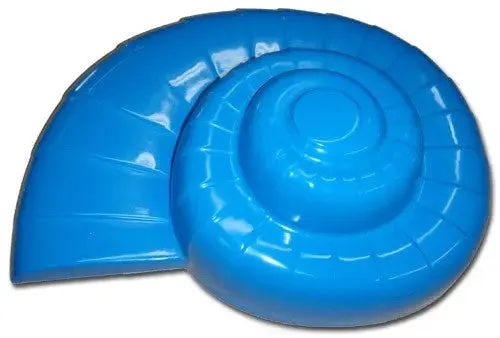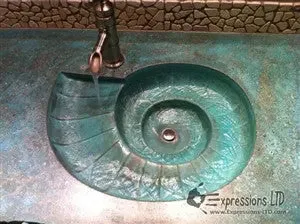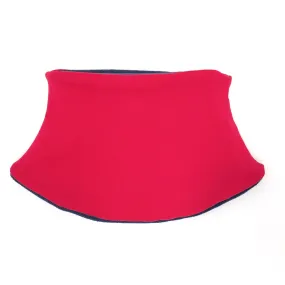Concrete Sink Mold SDP-46 Nautilus Sea Shell Design (20"x15.25"x5.5")
- The 'Nautilus' Sink Mold for concrete sink fabrication.
- Designed after the fossilized remains of the Nautilus shell. Spiral shape channels water smoothly around, and down, to the drain. Smooth transitions ensure ease of cleaning.
- Small style drain for bathroom lavatory size drains. Each rubber Sink Mold comes with a reusable (1.5" size) to be used for the drain hole (simply silicone the rubber plug onto the drain area of the mold).
- Create a seamless integral concrete sink and counter top, or form around to create a vessel sink.
- All our molds have Lifetime Guarantee against defect. This Guarantee does not cover misuse of the Molds (Dropping the Mold, Prying the Mold out using a screwdriver, Driving onto it with a truck tire... etc.).
- Expressions LTD will not be held liable for any damage, misuse, or collateral damages resulting from use of any of our products. If there is a flaw or defect with a product, we will fix or replace the product.
Specifications- Concrete Sink Mold SDP-46 Nautilus Sea Shell Design (20"x15.25"x5.5"):
- Length: 20" (Across)
- Width: 15 1/4" (Front-To-Back)
- Depth*: 5 1/2" (At Drain)
- Sides have at least a 5° slope to ensure Mold removal from concrete.
- Available in two Mold versions- mirror images of each other:
- Nautilus Left- Finished sink will have the flat spot of the 'Nautilus' on the left side, where the faucet typically is placed.
- Nautilus Right- Finished sink will have the flat spot of the 'Nautilus' on the right side, where the faucet typically is placed.
Mold Use:
- Watch videos of Mold Setup, Casting, and De-Molding/Removal on our .
- A basic Sink Mold Instruction sheet is .
- When planning, remember to add 1" - 2" to each side of the sink to your measurements, to account for the concrete thickness on the sides of the finished sink.
- Optional- Rubber molds don't 'need' to be waxed, but it can help to make removal easier. To wax the mold, apply 2-3 coats of to the mold, lightly buffing between coats once it hazes.
- Apply small amounts of silicone to the Mold's bottom, and set in place in your form. Allow silicone to dry.
- Screws can be used to secure the Mold if necessary. Using screws of the appropriate length, screw through the bottom of the form, up into the bottom of the Sink Mold.
- Run a smooth silicone bead around perimeter of the Sink Mold, where it meets the form base (using a tool such as our Caulking Ball Tool makes this process very clean and easy).
- Apply a thin coat of to the Mold just prior to casting the concrete piece.
Concrete Casting:
- Various methods can be used to cast the concrete piece. View our for tips on concrete mixes.
- GFRC: Cement and fiberglass is sprayed on and hand packed into the form and around the Mold.
- Wetcast: Oatmeal consistency concrete is placed in form and around the Mold and vibrated. A simple box should be built around the Sink Mold, to contain the concrete during this process.
- Hand Packed: A drier concrete mix is hand packed into the form and around the Mold. A second step after de-molding will fill the voids with cement slurry, usually of a different coloring.
- Any voids in the finished concrete can be filled using a .
- Mix your own slurry by mixing Portland cement, , and water (or water/mix).
Mold Removal:
- If the steps above were followed for the Mold Setup, then most Molds will usually pull out of the concrete with little effort.
- If the mold is difficult to remove, try:
- Compressed air shot around the Mold rim will break the suction holding the Mold in the concrete.
- Most Molds can be pushed out of the concrete by removing the drain piece, and pushing the Mold out through the drain slot.
Clean-up and Care Concrete Sink Mold SDP-46 Nautilus Sea Shell Design (20"x15.25"x5.5"):
- Clean Mold with a sponge after each use. Any dried cement residue can be removed with a scotch-brite pad (as outlined above in the Mold Setup section. A light muriatic acid wash (20:1, 20 parts water to 1 part muriatic acid) can also remove cement scale.
- Waxing and buffing the Mold after cleaning it use is recommended to protect the Mold until its next use.


















